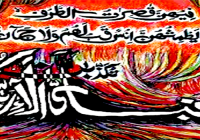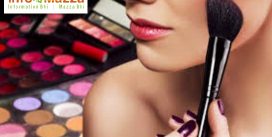Read More
Bamboo
Sadequain and Calligraphic Modernism
This article examines the career of the immensely productive Sadequain Naqqash (1930-87), Pakistan’s most celebrated artist. A self-trained, larger-than-life figure, Sadequain charted a singular trajectory in enacting a paradoxical subjectivity. He remained close to national aesthetic ideologies that promoted calligraphy under the increasing Islamization of the 1970s and 1980s, yet maintained a persona that simultaneously relayed aspects of transgressive Indo-Persian Sufism into a dialogue with transnational modernism during the 1950s and 1960s in order to…
Read More
Sadequain’s Calligraphy
Sadequain’s calligraphy at Lahore Museum. Sadequain’s calligraphy at Lahore Museum. Sadequain’s calligraphy at Lahore Museum. Syed Sadequain Ahmed Naqvi, Tamgha-e-Imtiaz, Pride of Performance, Sitara-e-Imtiaz (Pakistani Awards), also often referred to as Sadequain Naqqash, was a world-renowned Pakistani artist, best known for his skills as a calligrapher and a painter. He is considered as one of the finest painters and calligraphers Pakistan has ever produced. Sadequain was responsible for the renaissance of Islamic calligraphy in Pakistan….
Read More
About Islamic Calligraphy
Islamic calligraphy, or Arabic calligraphy, is the artistic practice of handwriting and calligraphy, based upon the Arabic language and alphabet in the lands sharing a common Islamic cultural heritage.It is derived from the Persian calligraphy. It is known in Arabic as khatt, which derived from the word ‘line’, ‘design’, or ‘construction’. The traditional instrument of the Arabic calligrapher is the qalam, a pen made of dried reed or bamboo; the ink is often in color,…
Read More





